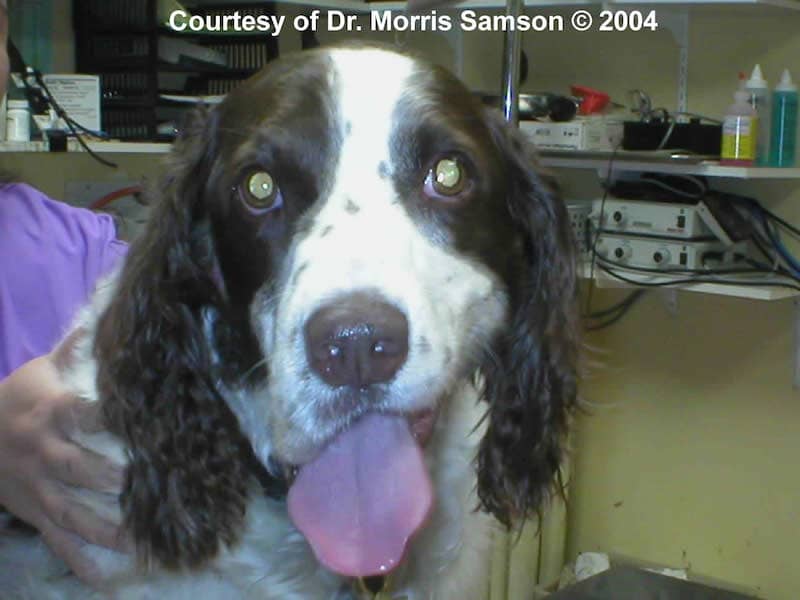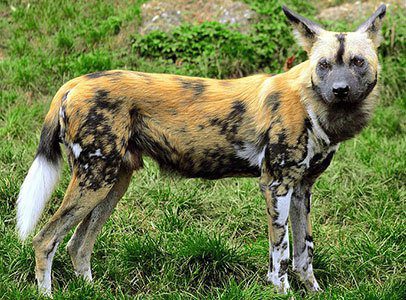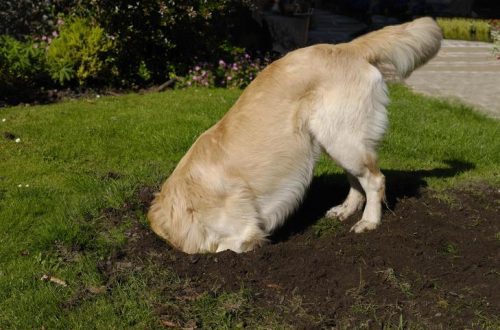
Paralysis of the facial nerve in a dog: treatment and care
Facial palsy in dogs is a condition characterized by swelling or misalignment of the muzzle and loss of control of the facial muscles. If your pet suddenly looks like the two-faced supervillain Harvey Dent, do not panic: most cases of facial paralysis have a favorable outcome Paralyzed dog – how to care for and how to help?
Contents
The dog was paralyzed: causes
Paralysis occurs as a result of damage to the facial nerve, which is called the seventh cranial nerve. It is connected to the muscles that control the eyelids, lips, nose, ears and cheeks of a dog. If it is damaged, part of the muzzle may appear stiff or droopy. The effects of nerve damage may persist for a long or indefinite period.
Cocker Spaniels, Beagles, Corgis and Boxers are more likely to suffer from this condition in adulthood compared to other breeds.
Temporary facial paralysis in dogs can last several weeks. Its possible causes include:
- middle and inner ear infections;
- head trauma;
- endocrine disorders, in particular hypothyroidism, diabetes mellitus, Cushing’s disease;
- toxins, including botulism
- tumors, especially neoplasms that affect or compress the seventh cranial nerve or brain stem.
Most cases of facial paralysis in dogs are idiopathic and not associated with any specific cause. Very rarely, this condition is iatrogenic or can be accidentally caused during surgery.
Symptoms of facial paralysis in dogs
Depending on the cause, facial paralysis in dogs can be unilateral or bilateral. Bell’s palsy, a form of facial paralysis in humans that causes nerve damage, has a similar appearance in a pet.
Common signs of cranial nerve VII injury include:
- salivation, since the facial nerve also controls the salivary glands;
- sagging lips and ear;
- deviation of the nose in a healthy direction;
- the dog does not blink or close the affected eye;
- while eating, food falls out of the mouth;
- eye discharge.
If the owner suspects facial paralysis in the pet, you should immediately contact your veterinarian. He will perform a comprehensive physical examination of the dog’s eyes and ears, check for motor coordination, and rule out any cranial nerve and systemic neurological problems.
Dry eye syndrome
An important step in the examination of the dog will be to check its ability to blink an eye on the affected side of the muzzle. The Pet Health Network notes that keratoconjunctivitis sicca, commonly referred to as “dry eye,” creates a significant risk of facial paralysis in dogs. This condition develops when a dog’s lacrimal glands do not produce enough tear fluid and as a result, the dog is unable to close the affected eye.
A specialist can conduct a study known as the Schirmer test. This will help determine the level of tear fluid production in the dog’s eyes. He may prescribe “artificial tears” because pets with dry eyes are at risk of developing corneal ulcers.
Other studies
The doctor will also carefully examine the dog’s ear canals. Departing from the brain, where they originate, fibers of the seventh cranial nerve pass close to the middle ear on their way to the facial region. Examination of the ear canal helps rule out an outer ear infection, but CT or MRI is often required to definitively determine the presence of middle or inner ear or brain disease.
In some cases, the VIII cranial nerve is also affected – the vestibulocochlear nerve, which is located in close proximity to the VII cranial nerve. The XNUMXth cranial nerve carries sound and balance information from the ear to the brain. Veterinary Partner notes that damage to the VIII cranial nerve causes vestibular disease, which manifests itself in the form of an unsteady gait, weakness, an unnatural tilt of the head and nystagmus – abnormal eye movement.
Most often, the underlying cause of facial paralysis in dogs remains unknown. But the veterinarian may order a series of blood tests and thyroid hormone tests to rule out other diseases. This may be useful in diagnosing various hormonal disorders associated with facial paralysis.
Treatment and care of a paralyzed dog
Idiopathic facial paralysis in dogs does not require treatment other than supportive care. An important element of dog care is to prevent complications associated with dry eye syndrome and the inability to blink.
If a doctor prescribes artificial tear preparations to lubricate the affected cornea, this treatment is critical in preventing infections and corneal ulcers. Since dogs do not always squint at the pain of corneal ulcers, any redness around the eyes should be looked out for and contacted by a veterinarian immediately. If the lesions of the visual organs are not treated, they can develop into a very serious problem.
In the case of an ear infection, the dog will need a course of antibiotics and sometimes surgery. If blood tests reveal an underlying disease, or imaging reveals a tumor, treatment options should be discussed with a veterinarian.
Paralyzed dog: what to do
Uncomplicated facial paralysis in dogs is not usually life-threatening. Pets suffering from facial paralysis and vestibular disorders often make a full recovery.
Although idiopathic facial paralysis in a dog can cause some anxiety for its owner, for a pet it is not a painful condition. However, if you notice any problems, it is best to contact your veterinarian immediately. A prompt response will provide the owner with peace of mind and the opportunity to provide their four-legged friend with optimal care.





